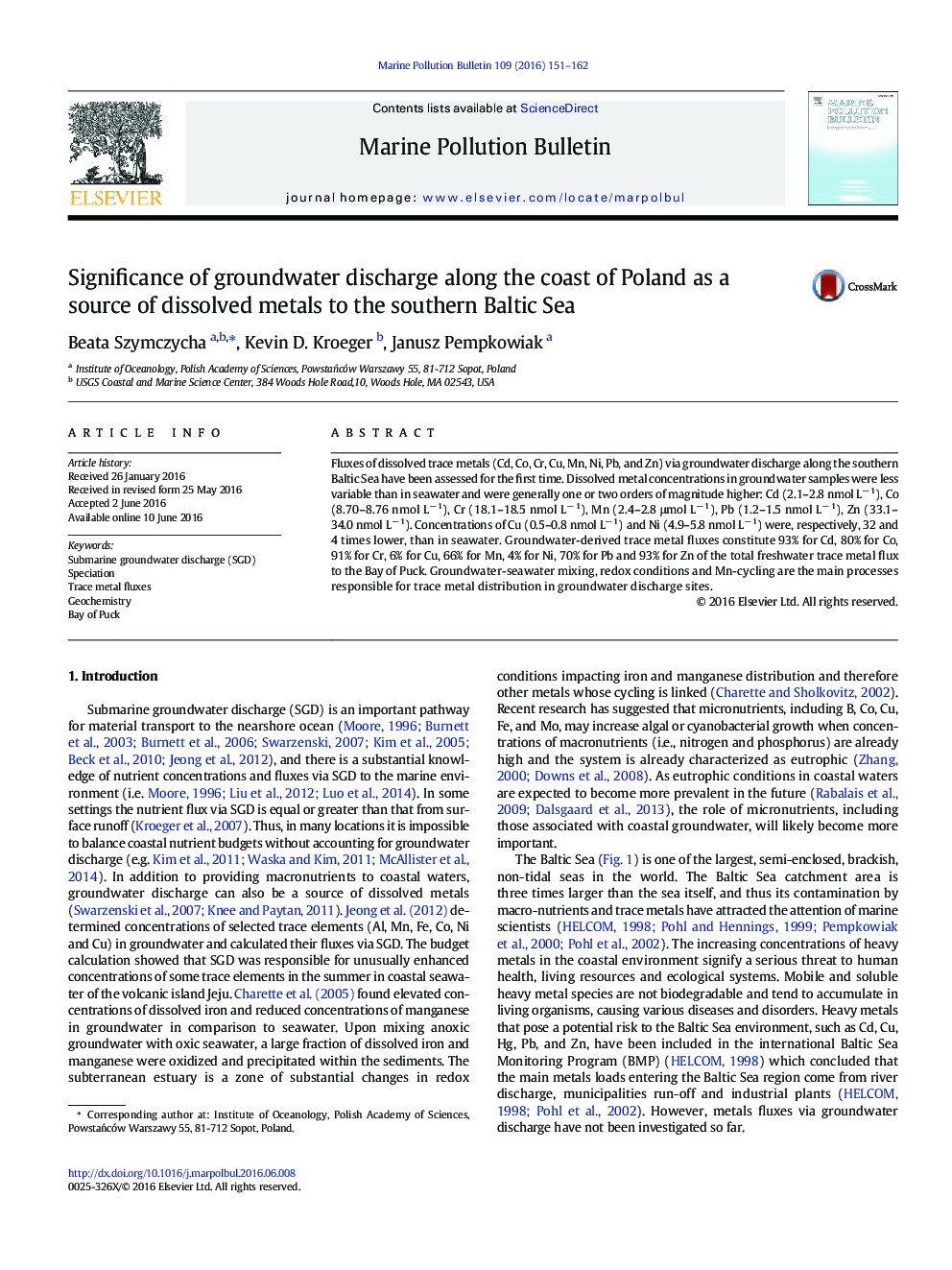| Article ID | Journal | Published Year | Pages | File Type |
|---|---|---|---|---|
| 4476387 | Marine Pollution Bulletin | 2016 | 12 Pages |
•Trace metals concentrations in groundwater discharged into the southern Baltic Sea.•Metals fluxes via groundwater discharge into the Bay of Puck and southern Baltic Sea.•Processes influencing trace metals distribution in groundwater discharge sites.
Fluxes of dissolved trace metals (Cd, Co, Cr, Cu, Mn, Ni, Pb, and Zn) via groundwater discharge along the southern Baltic Sea have been assessed for the first time. Dissolved metal concentrations in groundwater samples were less variable than in seawater and were generally one or two orders of magnitude higher: Cd (2.1–2.8 nmol L− 1), Co (8.70–8.76 nmol L− 1), Cr (18.1–18.5 nmol L− 1), Mn (2.4–2.8 μmol L− 1), Pb (1.2–1.5 nmol L− 1), Zn (33.1–34.0 nmol L− 1). Concentrations of Cu (0.5–0.8 nmol L− 1) and Ni (4.9–5.8 nmol L− 1) were, respectively, 32 and 4 times lower, than in seawater. Groundwater-derived trace metal fluxes constitute 93% for Cd, 80% for Co, 91% for Cr, 6% for Cu, 66% for Mn, 4% for Ni, 70% for Pb and 93% for Zn of the total freshwater trace metal flux to the Bay of Puck. Groundwater-seawater mixing, redox conditions and Mn-cycling are the main processes responsible for trace metal distribution in groundwater discharge sites.
